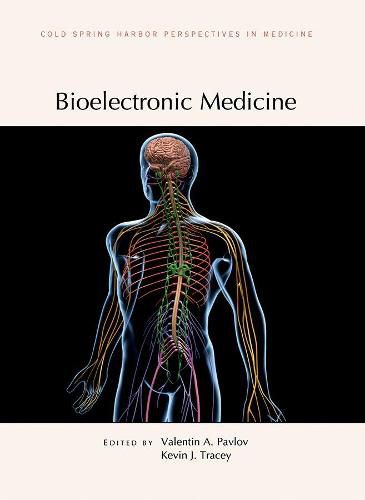Readings Newsletter
Become a Readings Member to make your shopping experience even easier.
Sign in or sign up for free!
You’re not far away from qualifying for FREE standard shipping within Australia
You’ve qualified for FREE standard shipping within Australia
The cart is loading…






Every organ in the human body is innervated by the nervous system and communicates with the brain via electrical signals. Various devices can be used to modulate these electrical signals and elicit changes in organ function with the aim of treating injury or disease. This approach is the basis of the rapidly emerging field of bioelectronic medicine, which has the potential to diagnose and treat medical conditions more precisely and effectively than ever before. Written and edited by experts in the field, this collection from Cold Spring Harbor Perspectives in Medicine covers many aspects of bioelectronic medicine, examining the neuronal pathways that are being targeted for manipulation, the electronic neuromodulation devices that are under development, and how all of this work is leading to new diagnostics and treatment options for patients. The contributors discuss how the stimulation of specific nerves (e.g., the vagus nerve) has been successfully used to treat certain conditions (e.g., rheumatoid arthritis and Crohn’s disease) and how similar strategies are being investigated as therapeutics for a multitude of gastrointestinal, cardiovascular, respiratory, and renal disorders. They consider implantable devices, magnetoelectric nanoparticles, ultrasound, optogenetic-based approaches, and electrophotonic devices as tools for acquiring, decoding, and modulating electrical signals from nerves and how they might be used to monitor and treat patients in the clinic.
The authors also discuss the ethical concerns related to the use of technologies such as these that can alter the brain. The volume is therefore an indispensable reference for neuroscientists, biomedical engineers, and physicians interested in the benefits and challenges of recording, stimulating, and blocking electrical activity in the human body.
$9.00 standard shipping within Australia
FREE standard shipping within Australia for orders over $100.00
Express & International shipping calculated at checkout
Every organ in the human body is innervated by the nervous system and communicates with the brain via electrical signals. Various devices can be used to modulate these electrical signals and elicit changes in organ function with the aim of treating injury or disease. This approach is the basis of the rapidly emerging field of bioelectronic medicine, which has the potential to diagnose and treat medical conditions more precisely and effectively than ever before. Written and edited by experts in the field, this collection from Cold Spring Harbor Perspectives in Medicine covers many aspects of bioelectronic medicine, examining the neuronal pathways that are being targeted for manipulation, the electronic neuromodulation devices that are under development, and how all of this work is leading to new diagnostics and treatment options for patients. The contributors discuss how the stimulation of specific nerves (e.g., the vagus nerve) has been successfully used to treat certain conditions (e.g., rheumatoid arthritis and Crohn’s disease) and how similar strategies are being investigated as therapeutics for a multitude of gastrointestinal, cardiovascular, respiratory, and renal disorders. They consider implantable devices, magnetoelectric nanoparticles, ultrasound, optogenetic-based approaches, and electrophotonic devices as tools for acquiring, decoding, and modulating electrical signals from nerves and how they might be used to monitor and treat patients in the clinic.
The authors also discuss the ethical concerns related to the use of technologies such as these that can alter the brain. The volume is therefore an indispensable reference for neuroscientists, biomedical engineers, and physicians interested in the benefits and challenges of recording, stimulating, and blocking electrical activity in the human body.